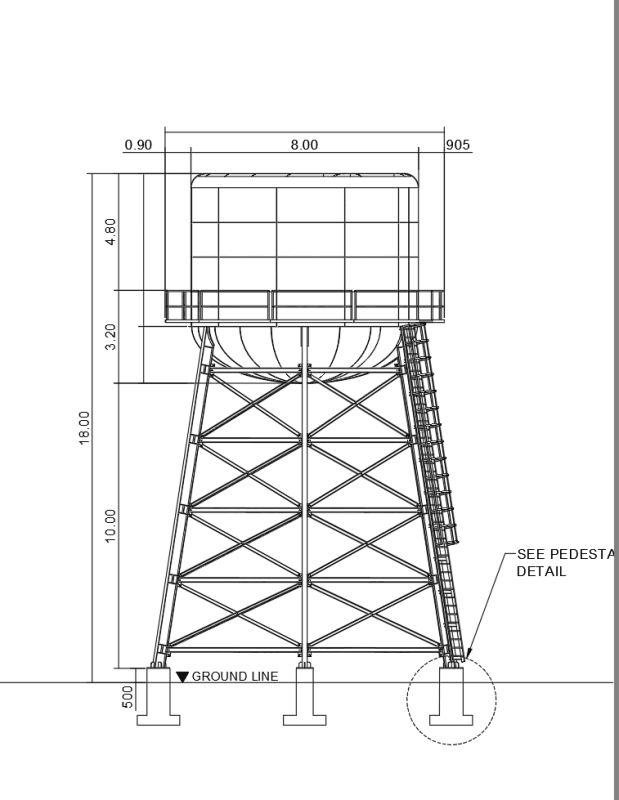I originally answered this on the other post, assuming you were looking at an existing tank, but seems this is either a new or hypothetical project.
The AWWA D100 standard gives some requirements for the design, but doesn't give any detailed procedure. In the old days, this was done by fairly approximate methods, accompanied by trial-and-error or strain-gauge analysis as applicable, and involving some conservatism in the code to allow for these methods. In the modern era, I would anticipate finite element work. This is the bowl shape and leg attachments specifically. The shell itself, the roof, and the tower are fairly straight-forward. The companies that do these tanks generally build the same tank portion over and over, so it's not a new design for them each time.
On a tank that low, there normally wouldn't be 4 rows of bracing in the tower. Typically sway rods are used for bracing, not structural members. There usually aren't horizontal members at the bottom as shown there. All of these things can be (and have been) done different ways, though.
Also, on a tank this low, you could accomplish the "elevated" storage by just making a flat-bottom tank 8m diameter by 18m high, which is why you don't see many built this low. The ones that come to mind were either backwash tanks for filters or else steam-locomotive watering tanks.


